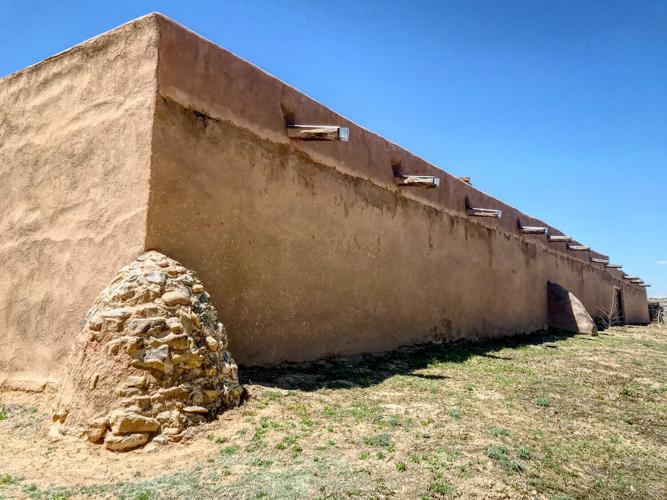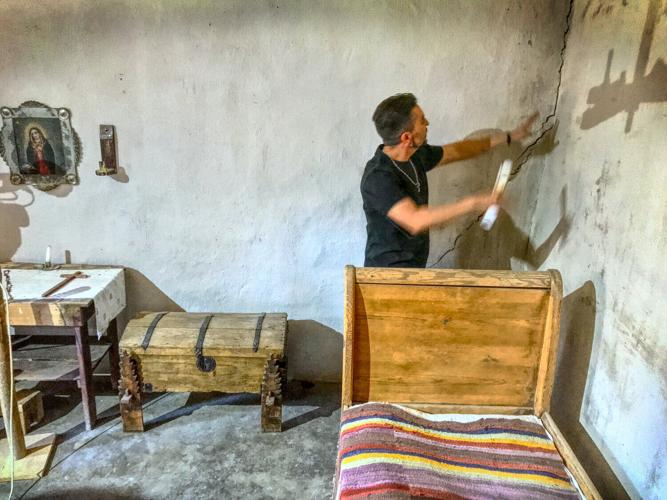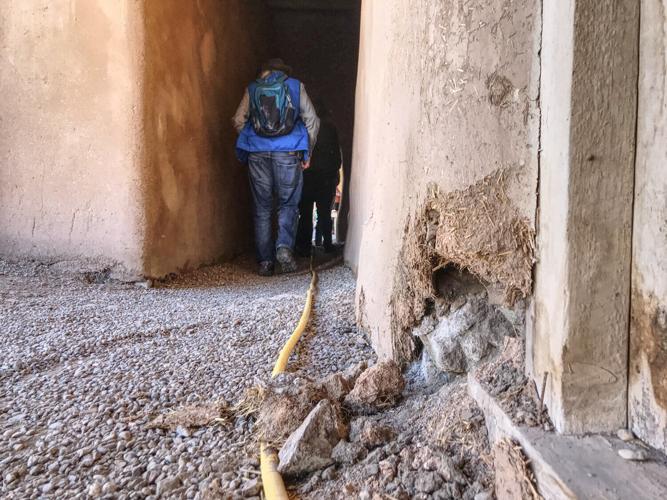Adobe is the oldest building material in the world, found throughout the Middle East, Asia, North Africa, South America, Europe and, of course, the Southwestern United States.
Adobe often requires replastering, which explains how adobe structures often change over time. Taos Pueblo, for instance, is one of the oldest continuously inhabited places in the nation, but the buildings one sees today are different from those first glimpsed by Spanish conquistadors.
In the 1960s when it was thought a hard cement stucco might mitigate the need for an annual replastering at the world-famous San Francisco de Asis Church in Ranchos de Taos. That effort famously failed when it was discovered water had seeped under the stucco and caused serious deterioration.
 The historic Hacienda de los Martínez is now facing a slow-moving disaster that, if not addressed soon, could rob Taos of one of its vital cultural treasures.
The historic Hacienda de los Martínez is now facing a slow-moving disaster that, if not addressed soon, could rob Taos of one of its vital cultural treasures.
In Taos, there are three primary communities that used adobe: there is Taos Pueblo, where Native people thrived for centuries, there was Ranchos de Taos, a settlement that has a longer history and had a greater population than the town of Taos until the late 1800s, and lastly, there was the village of Fernandez de Taos, which was established as the northern-most outpost of New Spain about 1615, preceding the Pilgrims’ landing at Plymouth Rock by five years.
The Hacienda de los Martínez has been called one of the last “great houses,” exemplifying Spanish Colonial living. The Martínez family came seeking economic opportunity in what was then a remote edge of the far-flung Spanish Empire. A farmer and stockman, Martínez was also a merchant involved with annual trade fairs near Taos Pueblo. Though the estate seems large, it was considered quite small by historic Mexican standards. Still, with its formidable walls situated on a rise above the river, it remains impressive today. The Martínez Hacienda is now owned by Taos Historic Museums.
While the effects of weather and time have conspired to create a dire situation in the present, a group of dedicated locals have gathered expertise and a vision to repair the hacienda for future generations.
 In one exhibit room, a crack in the wall has appeared that may have formed by an exterior wall buttress. In another exhibit area, the floor created using ox-blood plaster shows some deterioration, while the base of one wall was easily pulled apart, revealing the adobe bricks under the plaster.
In one exhibit room, a crack in the wall has appeared that may have formed by an exterior wall buttress. In another exhibit area, the floor created using ox-blood plaster shows some deterioration, while the base of one wall was easily pulled apart, revealing the adobe bricks under the plaster.
 The group is committed to saving the building in large part because it is “really, really meaningful to the Hispanic community.” Saving it may have the power to join various groups of people in Taos — many of whom have felt excluded for one reason or another — in a cause vital to the hearts of those who value the real history and cultures in Taos.
The group is committed to saving the building in large part because it is “really, really meaningful to the Hispanic community.” Saving it may have the power to join various groups of people in Taos — many of whom have felt excluded for one reason or another — in a cause vital to the hearts of those who value the real history and cultures in Taos.
You can read the original article at www.taosnews.com
